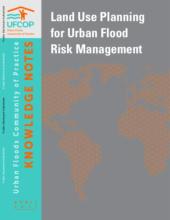Land Library
Welcome to the Land Portal Library. Explore our vast collection of open-access resources (over 74,000) including reports, journal articles, research papers, peer-reviewed publications, legal documents, videos and much more.
/ library resources
Showing items 46 through 54 of 4525.This note offers policy makers and practitioners an overview of the key aspects of land use planning used to manage flood risks in cities across the world. It includes examples from developed and developing countries to provide insight into what has worked in different contexts.
Ukraine has tremendous potential that has not yet been reached. Ukraine is endowed with intelligent, energetic, and entrepreneurial people; extraordinary fertile land; considerable natural resources; and a geographic location at the crossroads of Europe and Asia.
Shaping the Food System to Deliver Jobs is the fourth paper in a series on The Future of Food. This paper focuses on how the food system can deliver jobs.
Chinese municipalities have developed a large stock of capital assets during a period of rapid growth and urbanization, but have yet to modernize asset management practices.
Urbanization is a driving force for growth and poverty reduction.
Secure land tenure in rural landscapes is widely recognized as an essential foundation for achieving a range of economic development goals. However, forest areas in low and middle-income countries face particular challenges in strengthening the security of land and resource tenure.
Central America is undergoing an important transition. Urban populations are increasing at accelerated speeds, bringing pressing challenges for development, as well as opportunities to boost sustained, inclusive and resilient growth.
Women face many problems with regard to land inheritance and land rights in Kenya. Individual and community land ownership do not favour women. The reason for this is that ownership of land is patrilineal, which means that fathers share land amongst sons, while excluding daughters.
While women’s rights to land and property are protected under the Kenyan Constitution of 2010 and in various national statutes, in practice, women remain disadvantaged and discriminated.









